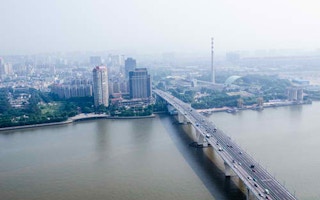The Pearl River Delta region in Guangdong province has seen improving air quality over the past few years, local authorities said on Sunday.
The density of PM2.5, hazardous airborne particles measuring 2.5 microns or less in diameter, fell to 34 milligrams per cubic meter in 2015 from 58 mg in 2007, according to the provincial environmental protection bureau.
The level nears the healthy maximum of 35 mg per cubic meter set by the government.
The delta region, a manufacturing center with nine cities, including Guangzhou, Shenzhen, Dongguan, Foshan and Zhongshan, contrasts sharply with many northern regions that suffer severe smog.
Despite declines in PM2.5, the delta region faces rising ozone pollution, especially in Guangzhou, Foshan, Dongguan and Zhaoqing, said Zhong Liuju, the bureau’s chief air expert.
In recent years, authorities have set safe standards for the emission of volatile organic compounds in industries like plating, printing and furniture making to combat ozone pollution, Zhong said.
The measures have helped to cut ozone pollution peaks, but the average level has risen nevertheless by 0.8 mg per cubic meter annually, he said.










